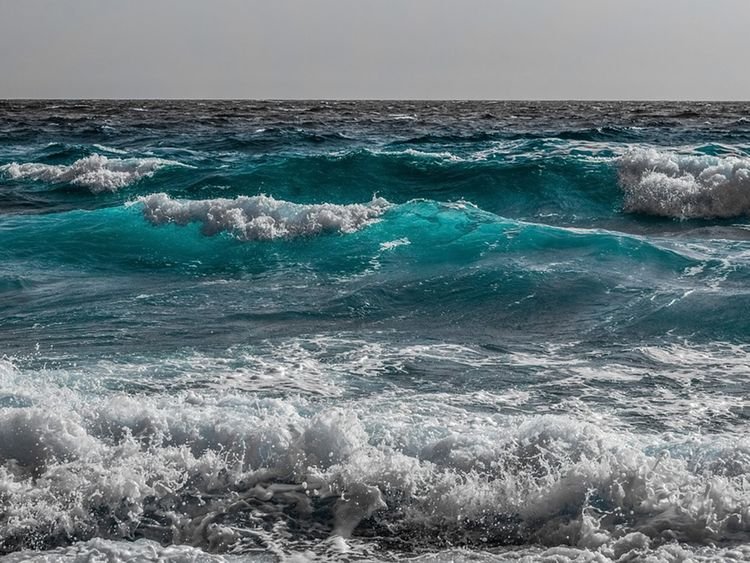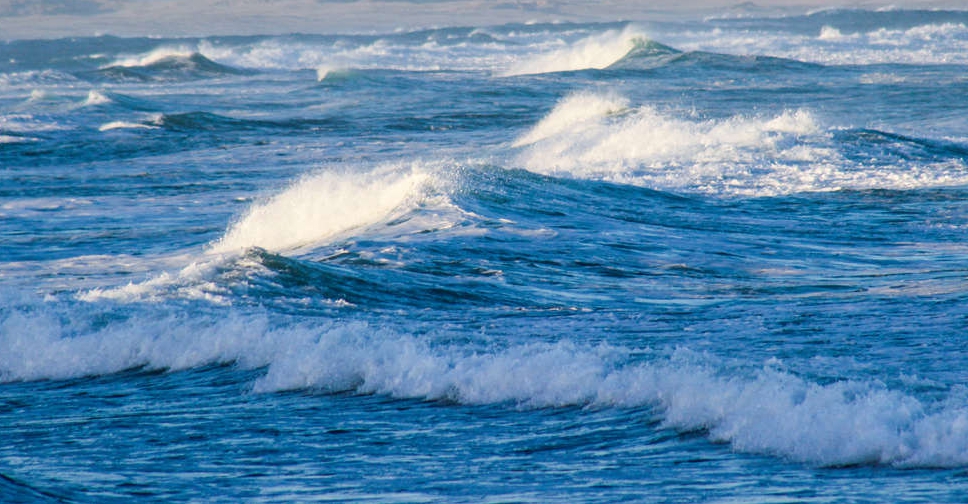If you are planning to visit the coast this week, it might be time to reconsider. Gulf beaches yellow alert warnings have been issued across multiple coastal regions as rough seas and dusty skies create dangerous conditions for swimmers, boaters, and beachgoers.
Authorities have urged people to stay away from the sea and avoid unnecessary outdoor activities as strong winds stir up waves and reduce visibility. The yellow alert is a reminder for everyone to stay cautious and follow safety guidelines.
Why are Gulf beaches on yellow alert?
The yellow alert was issued due to a combination of strong northwesterly winds and an approaching low-pressure system. This weather pattern is pushing dusty air masses into the Gulf region, causing hazy skies and making breathing difficult, especially for people with respiratory issues.

At the same time, the winds have whipped up the sea, with waves expected to reach heights of up to 6 feet (around 2 meters) in some areas. Lifeguards have reported strong undercurrents and sudden changes in wave patterns, making swimming extremely dangerous.
Meteorologists say these conditions are likely to last for several days, with the worst effects felt along popular beaches in the UAE, Saudi Arabia, Qatar, Bahrain, and Kuwait.

Which beaches are most affected?
The Gulf beaches yellow alert currently affects several major coastal spots:
- Jumeirah Beach and Kite Beach (UAE): Usually crowded with tourists and residents, these beaches are seeing much fewer visitors. Lifeguards have set up warning flags to indicate dangerous waters.
- Corniche beaches (Saudi Arabia): Waves crashing over walkways and strong gusts have made coastal roads slippery and risky.
- Doha Corniche and Katara Beach (Qatar): Authorities have advised people to avoid water sports and swimming.
- Al Jazayer Beach (Bahrain): Popular with families, but now nearly empty as winds make sandblasting uncomfortable.
- Kuwait’s coastal areas: High waves have already forced several boat trips and fishing activities to be canceled.
What does a yellow alert mean?

A yellow alert is not the highest warning level, but it indicates a potential risk to safety and calls for increased awareness. It usually means:
- Be cautious if going outdoors.
- Avoid swimming or water activities.
- Follow instructions from local authorities.
- Keep an eye on weather updates.
This system of alerts helps residents and visitors prepare in advance and minimize potential harm.
Health risks from dusty skies
While rough seas might stop people from swimming, dusty skies pose another serious threat. Dust storms carry fine particles that can cause respiratory problems, especially for:
- Children
- Elderly people
- People with asthma or other lung conditions
Hospitals have already reported a slight increase in patients complaining about breathing difficulties, irritated eyes, and allergies. Doctors recommend staying indoors as much as possible, using face masks, and keeping windows closed.
Impact on daily life and tourism
The Gulf beaches yellow alert has not only affected beachgoers but also hit tourism and daily life:
- Tourist activities canceled: Boat cruises, parasailing, and other beach sports have been temporarily suspended.
- Traffic disruptions: Dust reduces visibility on roads, increasing the risk of accidents. Many commuters report longer travel times.
- Closed outdoor events: Some open-air markets and events have been postponed to ensure public safety.
- Economic impact: Businesses near the beach, including cafes and rental shops, are seeing a drop in customers, affecting their daily income.
Local authorities and tourism departments have reassured the public that these measures are temporary and aimed at protecting everyone’s safety.
How are authorities responding?
To manage the Gulf beaches yellow alert, governments and emergency services have taken quick action:
- Deploying extra lifeguards to monitor coastal areas.
- Issuing regular updates through social media and local news outlets.
- Installing warning signs and flags at beaches.
- Closing sections of beaches completely if conditions worsen.
- Disinfecting public spaces and providing free masks at key locations.
Some municipalities have also set up temporary shelters for people who might be stranded or affected by strong winds in open areas.
Safety tips for residents and tourists
During the Gulf beaches yellow alert, experts suggest taking simple but important precautions:
- Avoid the beach: Even if you are tempted, do not swim or enter the water. Strong undercurrents can pull swimmers out to sea quickly.
- Stay indoors: Limit your outdoor time, especially during peak dust hours.
- Use protective gear: Wear masks and sunglasses if you must go outside.
- Monitor official updates: Follow weather alerts and listen to local authorities.
- Secure loose items: Strong winds can blow away objects like outdoor furniture or umbrellas.
- Keep emergency contacts handy: Know the nearest hospital or clinic in case of respiratory emergencies.
How does this weather phenomenon happen?
Weather experts explain that this situation is due to seasonal wind patterns known locally as the “Shamal” winds. These northwesterly winds are common in the summer months and often bring:
- Sudden temperature drops
- Dust and sand storms
- Choppy seas
This year, the Shamal winds are stronger than usual because of additional low-pressure systems in the region. As a result, both land and sea conditions have become more dangerous than in previous years.
Environmental impact
The Gulf beaches yellow alert does not only affect humans. Marine life and coastal ecosystems are also under stress:
- Strong waves can damage coral reefs and underwater habitats.
- Sea turtles and other marine animals are forced to change their patterns.
- Birds that rely on calm beaches for nesting are disturbed and may abandon their nests.
- Sand movement caused by wind and waves can lead to coastal erosion.
Environmentalists are closely monitoring the situation to understand the long-term effects on the region’s biodiversity.
What to expect in the coming days

Meteorologists predict that the winds and dust will begin to settle by the end of the week. However, sea conditions might remain rough for a few more days afterward. By the weekend, visibility is expected to improve gradually, allowing activities to resume.
Authorities emphasize that even after the alert is downgraded, caution should continue until seas are completely calm and air quality returns to normal levels.
Voices from the community
Many residents and tourists have expressed disappointment at canceled plans, but most agree safety comes first.
“I came all the way from Europe to enjoy the sun and beach, but I understand it’s nature. Better safe than sorry,” said Maria, a tourist in Dubai.
“My kids were so excited to swim, but the waves were too scary. We spent the day indoors playing board games instead,” shared Ahmed, a local father in Doha.
Some beach vendors have called for support to recover lost income, suggesting temporary financial assistance or special promotional campaigns after conditions improve.
Lessons for future trips
The Gulf beaches yellow alert is a strong reminder of how quickly weather can change in the Gulf region. Travelers and locals alike can learn to:
- Check weather forecasts before heading out.
- Prepare alternative indoor plans.
- Pack protective items such as masks and light jackets, even in summer.
Planning ahead can turn an unexpected weather disruption into a safer and more manageable experience.
The importance of weather alerts
Experts highlight that public awareness campaigns and alert systems play a crucial role in preventing injuries and saving lives. Thanks to better forecasting technology, governments can warn people earlier and more accurately than ever before.
Citizens are encouraged to subscribe to official weather updates, download weather apps, and follow local government pages on social media to receive instant alerts.
Final thoughts
As the Gulf beaches yellow alert remains in place, the most important message is to prioritize safety over leisure. While the sea and sand might be tempting, respecting nature’s power is vital to avoid accidents.
Authorities continue to work around the clock to keep residents and tourists informed and safe. Meanwhile, community cooperation is key to reducing risks and ensuring everyone can enjoy the beautiful Gulf beaches once conditions improve.
Follow us on instagram: UAE STORIES
Read More: Pony.ai Robotaxi Dubai Launch: Transforming Smart City Mobility














